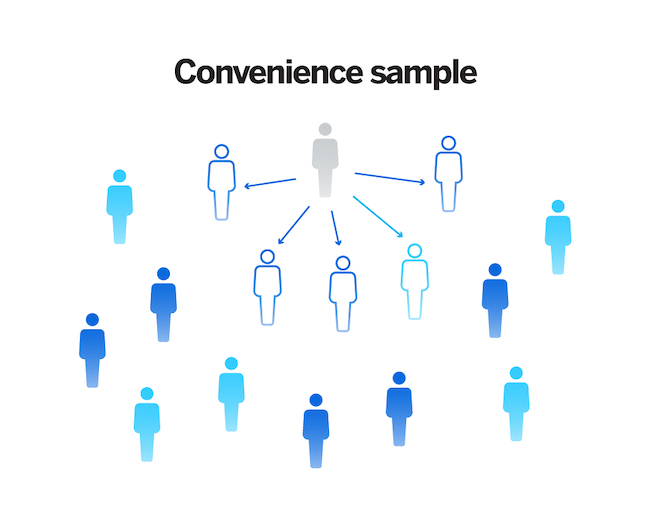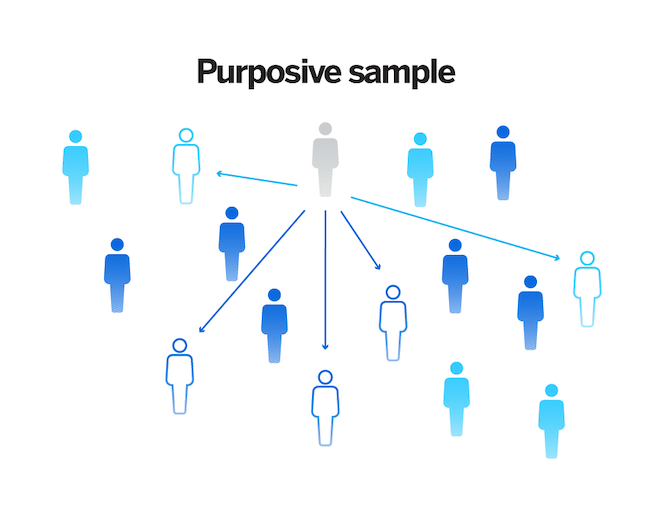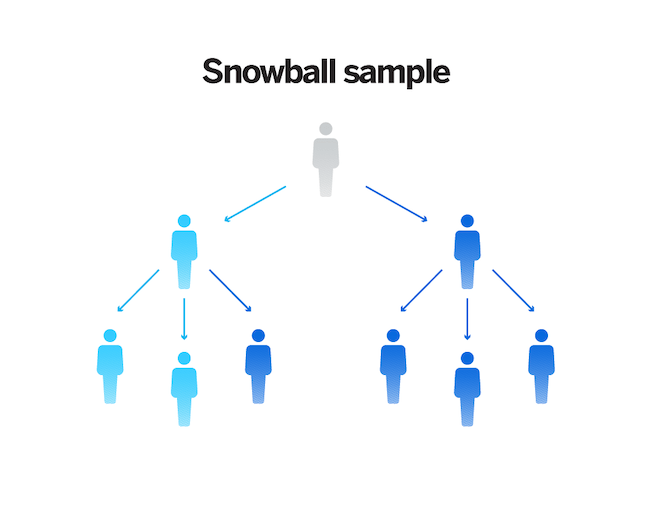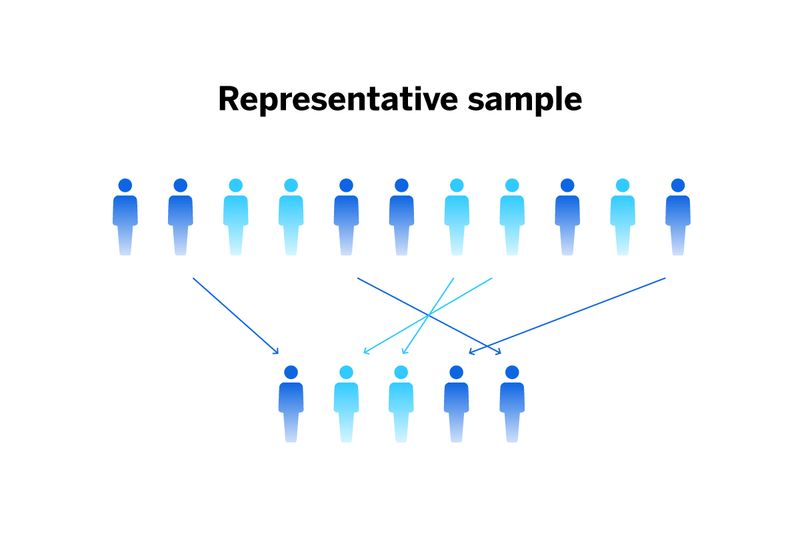In market research, it’s not practical nor affordable to interview or survey everyone in your target population.
That said, you still need to get survey results that accurately represent the views, opinions, or behaviors of that larger population. So, what can you do?
The answer is to survey a small group of that population in a way that generates a representative set of results that mirrors a larger sample size.
This smaller sample is known as a representative sample.
In this guide, we’ll introduce you to representative sampling, including what it is, the different types of representative samples you can use, why representative samples are important for market research and finally, how to build a representative sample for your study.
Free eBook: How to determine sample size
What is a representative sample?
A representative sample is a sample from a larger group that accurately represents the characteristics of a larger population.
It’s known as a representative sample because the answers obtained from it accurately reflect the results you would achieve by interviewing the entire population.
For example, in a warehouse with a sample of 1,000 people split equally into 500 males and 500 females, a smaller group of 100 males and 100 females could generate a representative sample of the larger group.
As they’re easy to conduct and cost-effective, representative samples are widely used to collect data across all different kinds of research. And if done properly, the results are just as accurate as a large-scale survey.
Representative sampling methods
Creating a representative sample is relatively straightforward, but there are a few things to consider — one being the size of populations or groups you want to study, and how this will determine the size of the sample group to accurately reflect the views of the larger group.
However, the size of the group isn’t the only thing to consider when building a representative sample.
For example, if you were running a study on how the global financial crisis affected middle and low-income families, you might want to determine the socioeconomic status of your sample. This way, you can remove the highest earners (or high-income families) from your study, ensuring you get an accurate and representative sample of your target audience.
It’s also important that your sample has the same properties as the full population. For instance, the right gender distribution and/or ages to ensure you represent the larger sample.
Now, there are two types of sampling you can use for a representative sample.
Probability sampling
Probability sampling is when you select a smaller group from a larger population using a randomized process.
In this process, every member of the population has an equal chance to be chosen for the sample.
Depending on the size of the larger population, it’s possible to inadvertently over-sample one portion of it.
Learn More: Probability sampling: What it is and how to use it
Non-probability sampling
Non-probability sampling involves selecting your sample, rather than leaving it to chance. However, as you’re selecting the sample, this can result in bias in some surveys as you’re aware of each participant’s characteristics.
As well as increasing bias, non-probability sampling involves more admin as the participants have to be selected.
One example of a non-probability sample is a quota sample, which is often used when trying to find a representative sample for an entire population like the US or UK.
In both instances, each sample size needs to be around 1,500 or 2,000 to accurately reflect the entire population.
Within this large group, there will be a series of subsets. For example, six age brackets (16-24 and 24-35), two gender breakdowns, and typically 15 regions (potentially fewer in the UK) to create a representative sample of the country.
Learn More: What is non-probability sampling? Everything you need to know
How does it compare to other sampling methods?
While representative sampling is one way to conduct a survey, there are other sampling methods you can use (without surveying every single member of a population) while still matching the characteristics of a smaller group with a larger one.
Here are a few other sampling methods you could consider:
Random sampling
Random sampling is a method of probability sampling that ensures every member of a larger population has an equal probability of being selected for the study.
It’s also used when you want to generate a representative sample of a whole population. For example, if you wanted a sample that would represent an entire country, you’d most likely use probability sampling.
Survey software or other tools (such as random number generators) are often used to ensure the sample is randomly selected.
Learn More: Your guide to simple random sampling
Systematic sampling
Systematic sampling is similar to random sampling in that there’s an element of chance in the selection process.
However, unlike random sampling, rather than choosing people arbitrarily, each person is assigned a number and then participants are selected at regular intervals.
For example, in a group of 50, each person gets a number, and then a starting point is chosen at random — i.e. the selection process will start at the number 7. Then, every 4th person will be selected. So the numbers selected would go like this: 7, 11, 15, 19, and so on until the sample size is reached.
Learn More: The complete guide to systematic random sampling
Stratified sampling
With stratified sampling, each member of the larger population is categorized into another subset based on characteristics. For example, age, gender, income and so on.
Once you’ve defined your subsets, you then work out how many people from each subset you’ll need to create a representative sample. Then, you use systematic sampling or random sampling to make the final selection.
Learn More: How to use stratified random sampling
Cluster sampling
Cluster sampling is similar to stratified sampling in that each participant is put into a smaller subgroup based on a particular characteristic.
However, rather than randomly choosing participants from every subgroup, you simply choose an entire subgroup to form the final sample.
Convenience sampling
As the name suggests, convenience sampling involves choosing participants who are convenient to you. For example, if you wanted to assess employee satisfaction, you could survey your employees.

Learn More: Convenience sampling method: How and when to use it?
Voluntary response sampling
Voluntary response sampling is when your sample is made up of participants who have volunteered to participate as part of the sample group. These participants usually volunteer because they have a strong opinion on the subject of the survey.
Purposive sampling
Purposive sampling, also referred to as judgment sampling or selective sampling, is when you rely on your expertise to choose members of the population to participate in the survey.

Snowball sampling
Snowball sampling, also referred to as chain-referral sampling, is a non-probability sampling technique in which the samples have traits that are rare or difficult to find. In this sampling method, existing study subjects require future subjects from amongst their acquaintances and friends, thus causing a snowball effect. As the sample builds up, it eventually reaches a point where enough data has been gathered to make it useful for research.

Why is a representative sample important in market research?
Building a representative sample is important for market research to ensure you gather accurate data and audience insights that can drive better decisions or improve processes.
Without a representative sample, you can’t be sure your research data will accurately reflect the views or behaviors of the people you want to understand better.
The most accurate data will always come from your target audience and a representative sample will ensure you get a high level of accuracy and avoid sampling errors.
Here are a few more reasons why representative sampling is important:
It’s practical and efficient: Representative sampling is about using a smaller group of people to understand a much larger population and thus gain accurate insights without the costs and administration of surveying an entire population.
It helps make accurate decisions: Without getting a representative sample of your target audience, you can’t be sure that you’re making decisions that benefit your business. Samples need to be carefully selected to ensure they’ll match your wider audience.
It helps to avoid sampling error: As we’ve mentioned, without ensuring your sample is representative, you can’t be sure that the data you’re collecting is accurate or relevant to what you’re trying to uncover.
It generates good ROI: The only way to be sure your business decisions will lead to improvements is to get the perspective of the audience who will be affected by them. Representative sampling ensures you target the right audience, netting insights that help you to improve products, services, and processes.
Free eBook: Determining Sample Size
How to build a representative sample
Once you’ve established the type of sampling you want to use – probability or non-probability sampling, there are a few simple steps to take that will help the sampling process be easier and more cost-effective.
1 – Define the population size: Understanding the population size of your target audience can help you to work out the sample size you’ll need for it to be representative.
2 – Define your sample size: Once you know the size of the population you can understand the size of the sample you’ll need. Find out how to calculate your sample size.
3 – Define the characteristics of your sample: Depending on the type of sampling methods you choose you’ll need to define the characteristics of your sample. You can then begin to either select your sample at random or divide them into subsets to narrow down who you’re looking for.
Once you’ve narrowed down your sample, characteristics, and sampling methodology, you can launch your survey.
Building a representative sample with Qualtrics
Representative sampling is a key element of generating accurate results, and with Qualtrics CoreXM — you can reach the right people at the right time.
Through Qualtrics Audience Management Solution, get on-demand insights with feedback from the right people, at the right time. You can:
- Build rich profiles of your customers and prospects and integrate their survey feedback into your most critical decisions.
- Get more insights by launching research to your panel faster than ever
- Reduce the cost of research with your own, on-demand sample of respondents
- Act quickly on insights with responses delivered in real-time
- Drive higher response rates to surveys with your engaged panel of respondents
And that’s not all — if you need help defining your samples or including perspectives of a difficult-to-reach audience, Qualtrics Research Services can support you. Beyond finding the ideal target audiences and deploying research, their team of experts can help with research design, analysis of findings, and even custom-tailored recommendations for executive-level presentations.
By leveraging representative sample methods, your research studies will become more efficient and practical while still offering impactful insights that dramatically enhance business decisions.
Through representative sampling, you can increase the accuracy of your results, the credibility of your studies (enabling you to gradually become the go-to for actionable insights), and the usability of the insights you gather. In turn, you can use all the information you gather to build strong foundations for the strategies or projects you wish to carry out in the future.
Of course, to make the most of this data, you need a solution to analyze, understand and simplify it — not only so you can understand the findings, but also so that you can share those findings with others.
Free eBook: Determining sample size
